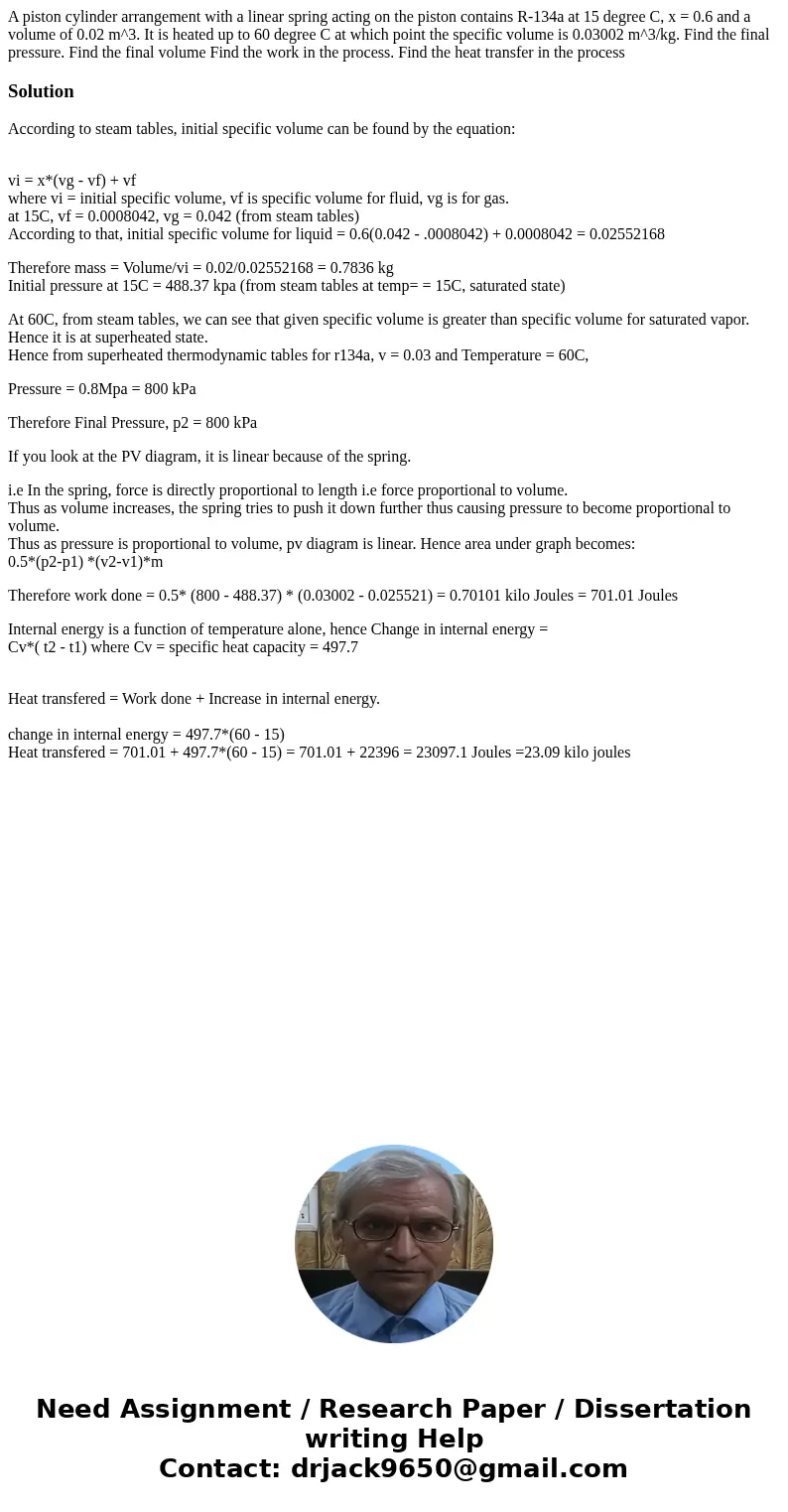A piston cylinder arrangement with a linear spring acting on
Solution
According to steam tables, initial specific volume can be found by the equation:
vi = x*(vg - vf) + vf
where vi = initial specific volume, vf is specific volume for fluid, vg is for gas.
at 15C, vf = 0.0008042, vg = 0.042 (from steam tables)
According to that, initial specific volume for liquid = 0.6(0.042 - .0008042) + 0.0008042 = 0.02552168
Therefore mass = Volume/vi = 0.02/0.02552168 = 0.7836 kg
Initial pressure at 15C = 488.37 kpa (from steam tables at temp= = 15C, saturated state)
At 60C, from steam tables, we can see that given specific volume is greater than specific volume for saturated vapor. Hence it is at superheated state.
Hence from superheated thermodynamic tables for r134a, v = 0.03 and Temperature = 60C,
Pressure = 0.8Mpa = 800 kPa
Therefore Final Pressure, p2 = 800 kPa
If you look at the PV diagram, it is linear because of the spring.
i.e In the spring, force is directly proportional to length i.e force proportional to volume.
Thus as volume increases, the spring tries to push it down further thus causing pressure to become proportional to volume.
Thus as pressure is proportional to volume, pv diagram is linear. Hence area under graph becomes:
0.5*(p2-p1) *(v2-v1)*m
Therefore work done = 0.5* (800 - 488.37) * (0.03002 - 0.025521) = 0.70101 kilo Joules = 701.01 Joules
Internal energy is a function of temperature alone, hence Change in internal energy =
Cv*( t2 - t1) where Cv = specific heat capacity = 497.7
Heat transfered = Work done + Increase in internal energy.
change in internal energy = 497.7*(60 - 15)
Heat transfered = 701.01 + 497.7*(60 - 15) = 701.01 + 22396 = 23097.1 Joules =23.09 kilo joules

 Homework Sourse
Homework Sourse